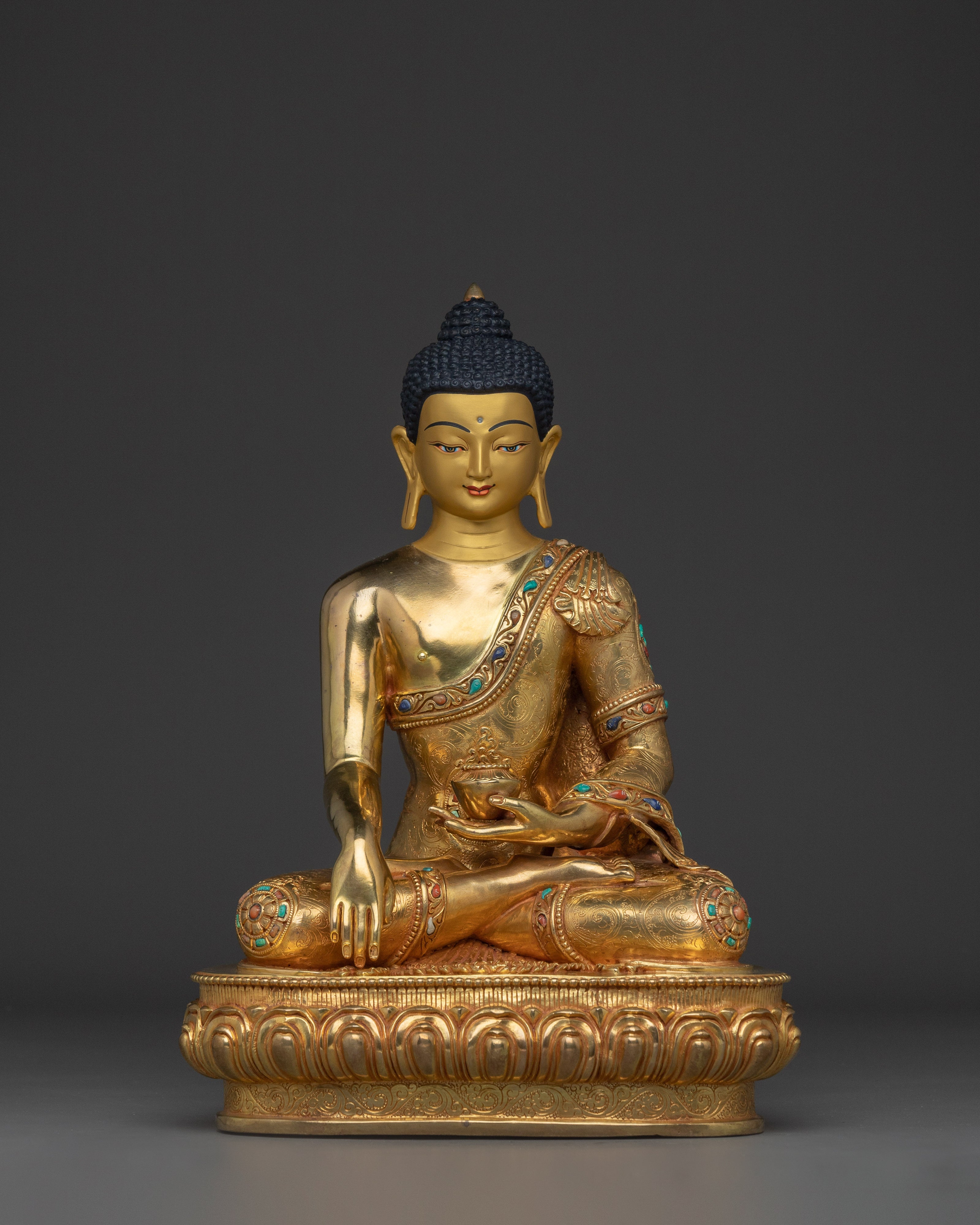Description
Meditative Tranquil Gautama Buddha Statue | Gautama Buddha Figurine for Home Decor
This Meditative, Tranquil Gautama Buddha Statue stands at 12.2”/31cm in height and 8.9”/22.5cm at the base, weighing 4.02 kg. Crafted from triple layer 24K Gold Gilded, Gold & Acrylic Paintings, Copper Body, and Gemstones, this statue captures the serene essence of the historical Buddha in deep meditation. Seated in the vajra posture, it symbolizes inner peace and spiritual enlightenment. It reflects timeless wisdom and tranquility and is perfect for altars, meditation spaces, or as a contemplative piece for home décor. Handcrafted by skilled Nepali artisans, this statue embodies artistic beauty and spiritual significance.
Shakyamuni Buddha is depicted in a peaceful, meditative posture with his eyes half-closed, radiating a sense of deep inner calm and awakened awareness. His right hand is positioned in the bhūmisparśa mudrā (earth-touching gesture), marking when he called the Earth to witness his enlightenment. His left hand holds an alms bowl, symbolizing simplicity, renunciation, and the monastic lifestyle. Resting atop his head is the uṣṇīṣa, a symbol of supreme wisdom, while his hair is coiled in snail-like forms, alluding to the famous story of snails sheltering him from the sun during his extended meditation. He sits in the vajra posture on a moon disc lotus base, embodying spiritual stability, purity, and focused determination. Behind him, two blooming lotus flowers represent the purity that arises from samsara and the blossoming of enlightenment. This peaceful and elegant depiction captures the timeless presence of the Buddha—calm, noble, and significant.
Size: 12.2”/31cm (Height) x 8.9”/22.5cm (Base)
Weight: 4.02 kg
Material: 24K Gold Gilded, Gold & Acrylic Paintings, Copper Body, Gemstones
Gautama Buddha, also known as Shakyamuni Buddha, was a spiritual teacher and the founder of Buddhism, born as Siddhartha Gautama in ancient Nepal. Renouncing his royal life in search of truth, he attained enlightenment under the Bodhi tree and shared the path to liberation from suffering. At the core of his teachings are the Four Noble Truths: the truth of suffering (duḥkha), its origin (samudaya), its cessation (nirodha), and the path leading to its cessation (mārga). This path is known as the Noble Eightfold Path, which includes right view, right intention, right speech, right action, right livelihood, right effort, right mindfulness, and right concentration—a guide to ethical conduct, mental discipline, and wisdom that leads to the end of suffering and ultimate freedom (nirvāṇa).



